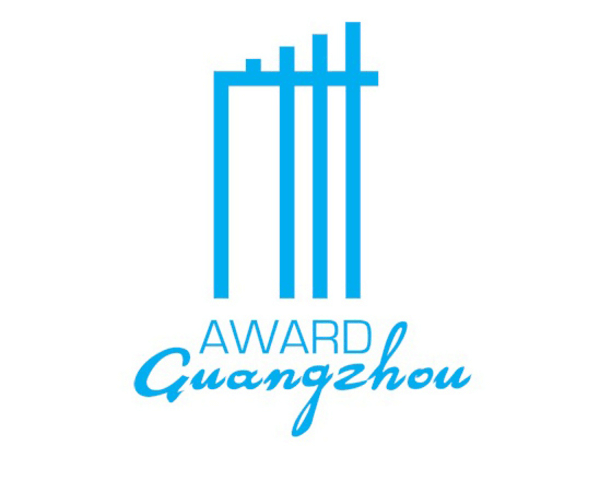 logo eco eficiencia - © City of Quito
logo eco eficiencia - © City of Quito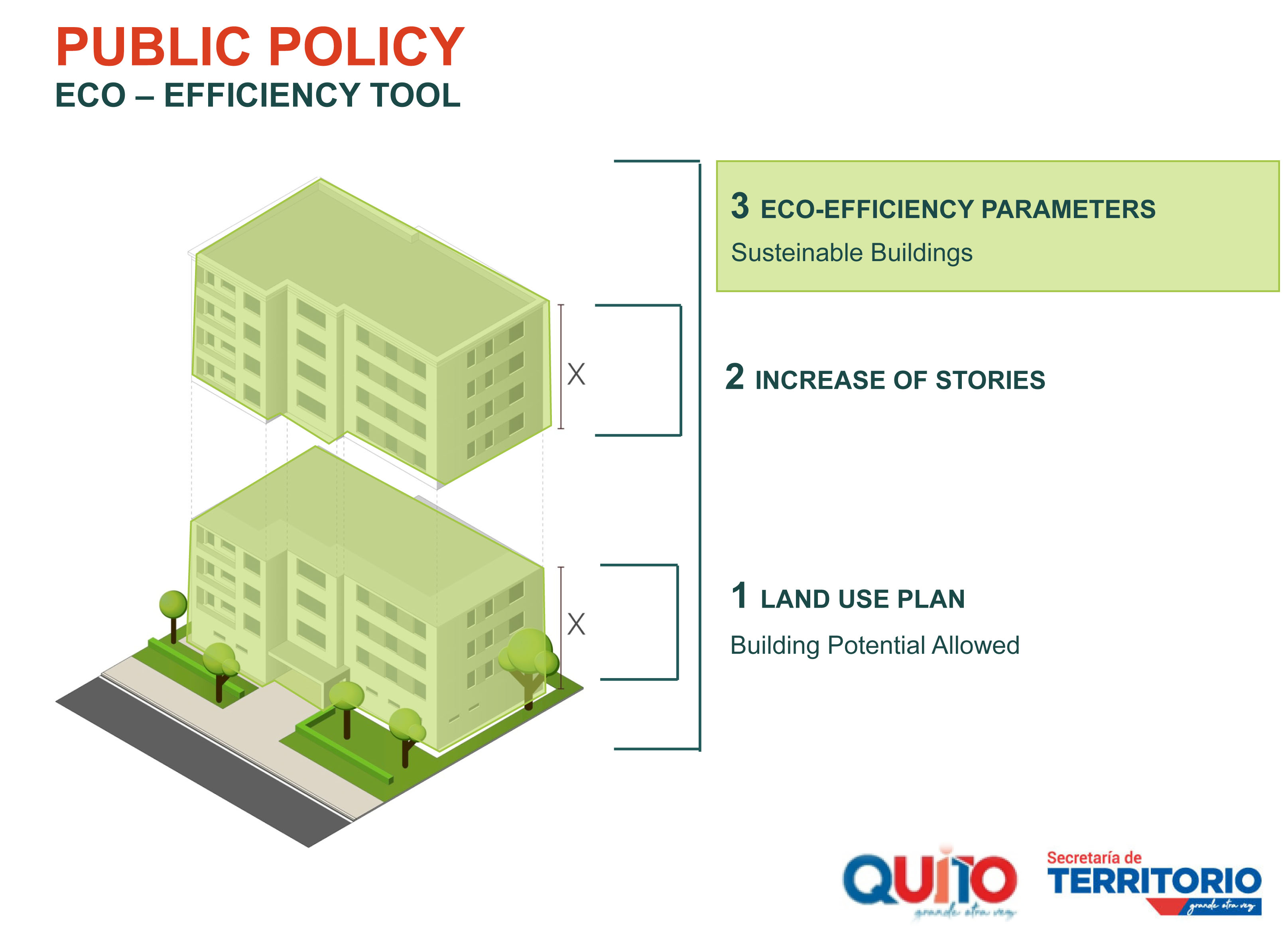 Public Policy - © City of Quito
Public Policy - © City of Quito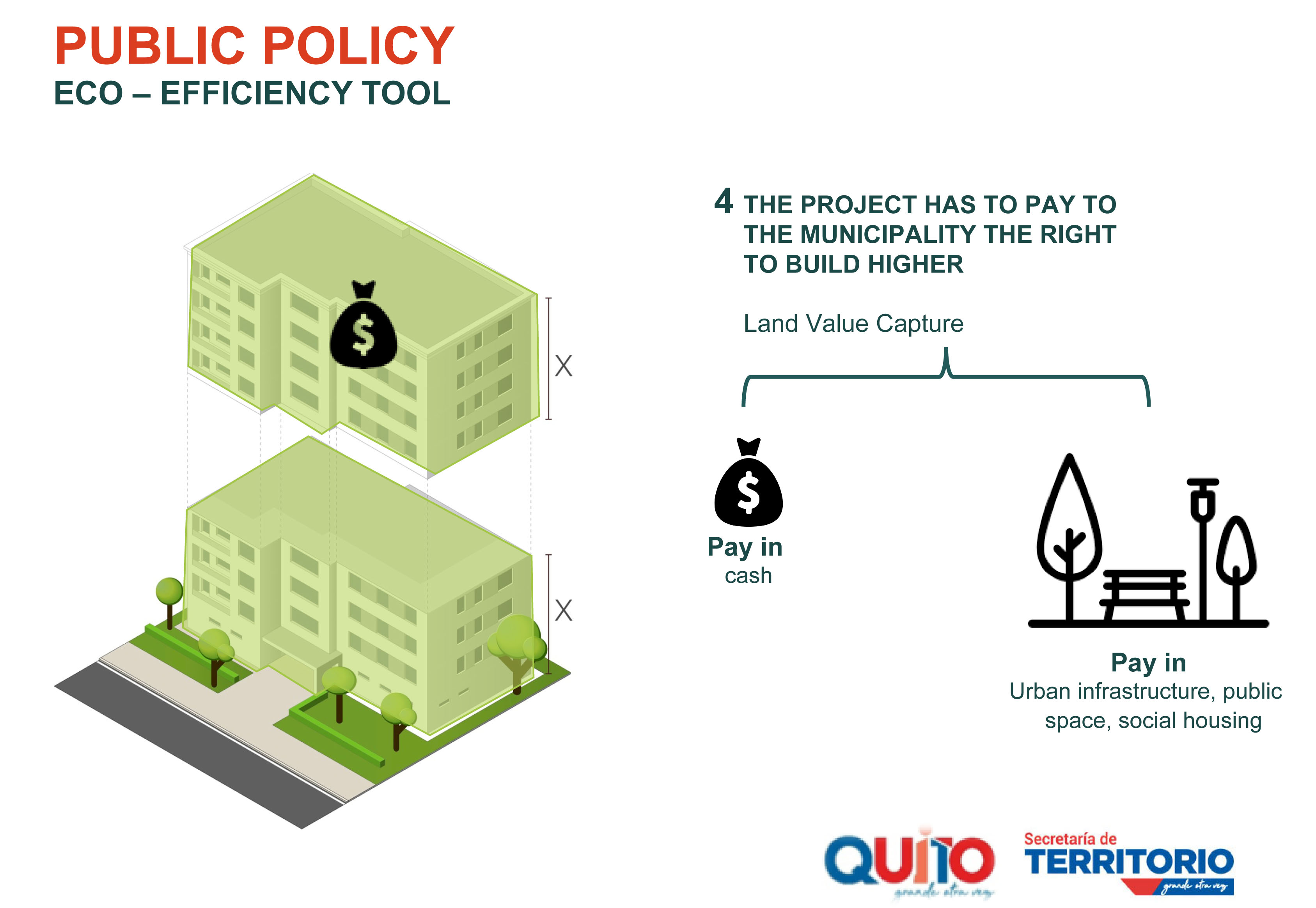 Public Policy - © City of Quito
Public Policy - © City of Quito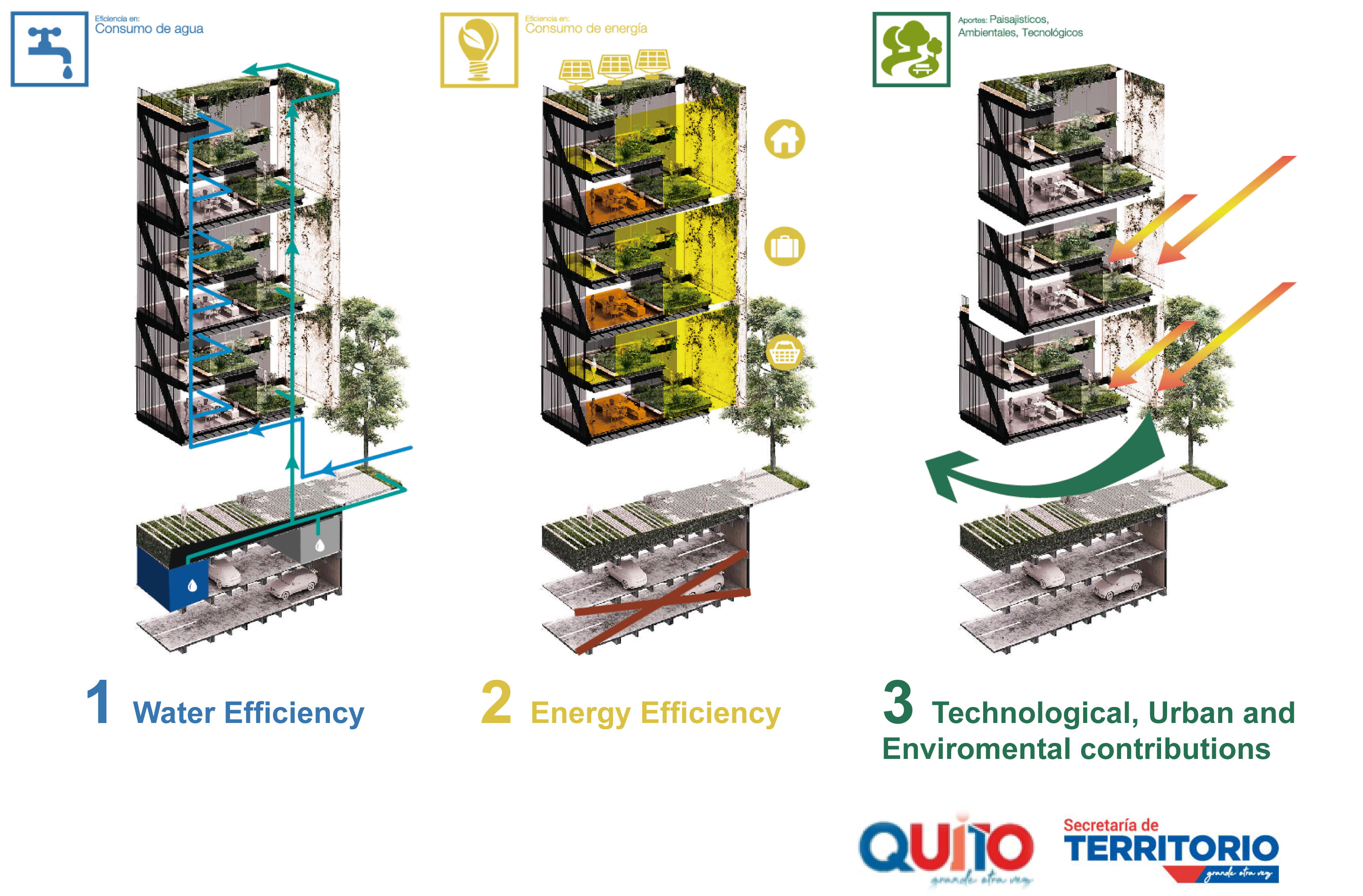 Parameters of eco-efficiency - © City of Quito
Parameters of eco-efficiency - © City of Quito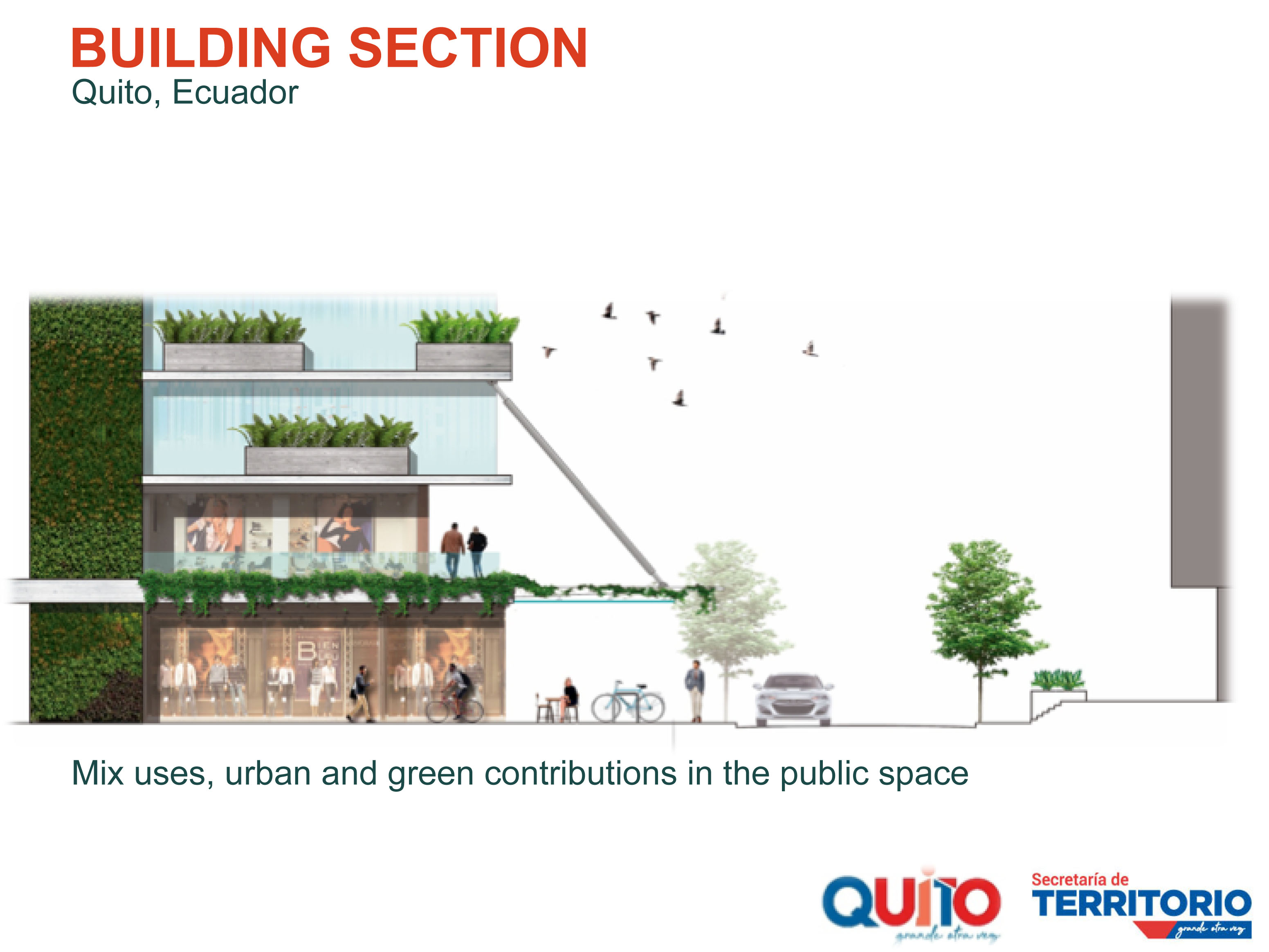 building section - © City of Quito
building section - © City of Quito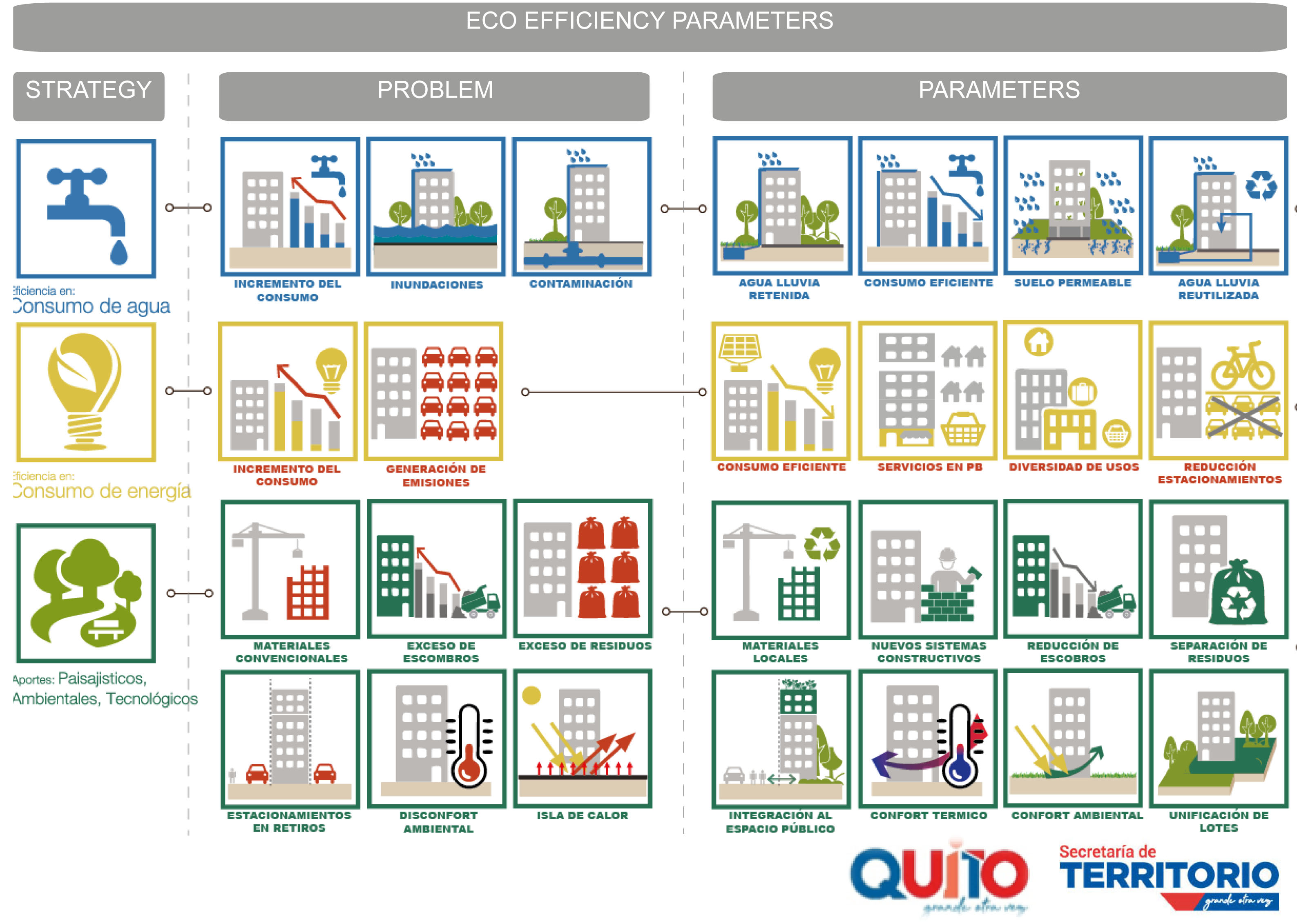 parametrs matrix - © City of Quito
parametrs matrix - © City of Quito urban section - © City of Quito
urban section - © City of Quito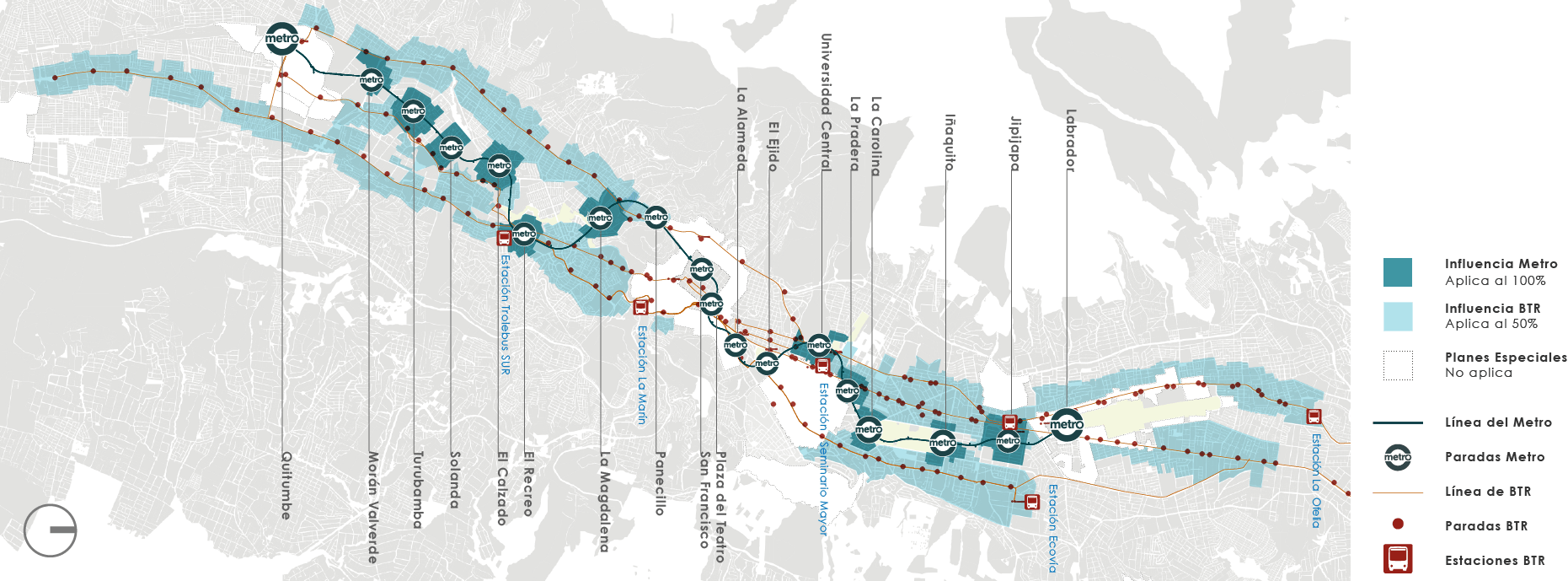 map - © City of Quito
map - © City of Quito
City
Quito
Main actors
City Government, Private Sector, Public Utility, Research Institutes / Universities
Project area
Whole City/Administrative Region
Duration
Ongoing since 2019
Building a sustainable city around the existing public transport system
The Eco Efficiency Ordinance for the Metropolitan District of Quito is a regulation approved by the Metropolitan Council. It allows new buildings to have more floors if they are located close to Bus Rapid Transit (BRT) stops and future Metro stations. The maximal number of floors allowed is established on the Land Use Plan. The Eco Efficiency Ordinance authorizes a 50% increase of floors in building projects located close to BRT stops and 100% increase for building projects close to a Metro station. To access these increases, the building project has to fulfill the requirements of the Eco Efficiency policy related to water and energy efficiency, technological, urban and environmental parameters. Finally, the builder has to pay the Municipality for the right to build higher, applying a formula under the concept of land value capture.
Guangzhou Award
This project was shortlisted for the 'Guangzhou Award' in 2020.
Transportation is one of the main culprits of the ecological footprint in Quito. This situation is becoming worse with accelerated urban sprawl and increased real estate development in the peripheral rural and peri- urban areas. This forces residents to commute for long periods between their residencies and places of work. For this reason, the Municipality has introduced this policy that optimizes public transport and guides Quito towards being a more compact, diverse and efficient city.
The Eco Efficiency Ordinance for the Metropolitan District of Quito is a public policy of the local government. This regulation is framed by a national law of land use and land management planning.
The Municipality has developed this policy to transform Quito into a more compact and diverse city; especially in the urban areas directly influenced by the integrated public transport system. By encouraging urban development in areas where access to basic services is easily granted, the policy contributes to reduce urban sprawl toward rural and peri- urban areas. This instrument is the first approach related to environmentally responsible design in new buildings.
The Eco Efficiency policy starts from the principle of promoting a compact, multi-use and sustainable city around the existing public transport system. The environmentally responsible design parameters seek efficiency in the use of resources such as water, energy, as well as contributions in the fields of seismic, safety and bioclimatic design. This policy has provided new incentives for the construction sector to use environmentally sustainable technology and designs.
For each parameter of the Eco Efficiency model, a baseline of indicators has been created, based on the situation and availability of local technology.
The Eco Efficiency policy has 20 parameters divided into 3 categories: (1) Water Efficiency, (2) Energy Efficiency and (3) Technological, Urban and Environmental Contributions, each of them has 100 points. Each category establishes a baseline indicator that allows the Municipality to collect information related to the amount of rainwater collected and used, permeable soil area, diversity of uses, use of local material, waste management, implementation of bicycle parking, reduction of waste during construction, etc.
The initiative has also established incentives for the building projects that include provision of social housing. The buildings that allocated at least 10% of the total number of units as social housing are exonerated of paying tax on the extra floors. This incentive encourages offering affordable homes in strategically located areas for low-income people. To date one building has applied this model.
Building projects must also include urban design strategies that integrate the ground floor with the public space surrounding the building.
The initiative focusses on the areas that surround the public transport system of the city including the Bus Rapid Transit Lines (2 BRT) and Metro (1 lines).
The Secretary of Territory, Habitat and Housing is the public agency in charge of developing public policy around land use, habitat and public spaces and housing for the Metropolitan District of Quito. The main resources provided have been human, technical and managerial. The Secretary has a multidisciplinary technical team that has been working on these projects, for a long period of time. Currently, private companies accredited by the Municipality are in charge of reviewing the planning of Eco Efficiency projects along the 20 parameters defined in the Eco Efficiency policy.
Some of the main stakeholders that support the policy are the real estate sector, the academy and guilds such as the collage of architects of Ecuador. This includes professionals such us urban planners, architects, environmental engineers, economists and others.
To the date, 35 buildings have been approved using this policy. These buildings have contributed to the improvement of the environment through reductions in water usage and energy consumption. One of the main outcomes for the Metropolitan District of Quito is the support for densification and consolidation of the city around the public transport system, reducing urban sprawl. Additionally, this public policy has been very well accepted by the private sector, generating significant income for urban development. In economic terms, these buildings have generated $10,669. 816,00 dollars for the Municipality under the concept on land value capture. Under this concept, the developer pays for the execution of a public work such as infrastructure, public services or facilities and other works related to public space.
These buildings mostly are mix use (retail, office and residential) with approximately 150 additional floors in total between all projects, benefitting the people who live and work in these buildings as they are close to public transport that facilitates their mobility and access to other services.
One of the main obstacles identified was the availability of information that allows establishing a baseline of each parameter that measures energy efficiency, water consumption and other technological and landscaping contributions. Fortunately, the construction of the baseline was formulated by academics and other public companies; they contributed their knowledge to establish the first Eco Efficiency baseline, which will be the indicator that measures the impact of the public policy in the future.
The policy offers green certifications that are very well suited to the particularities of the city. Through the payment of land value capture, the Municipality can invest in public works that had not been financed for years.
The Eco Efficiency policy has been shared with cities in other countries that can adapt this policy to their localities.
On Map
The Map will be displayed after accepting cookie policy
